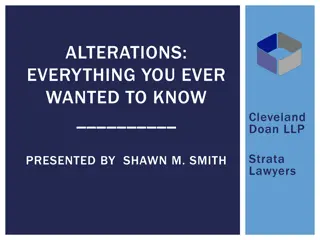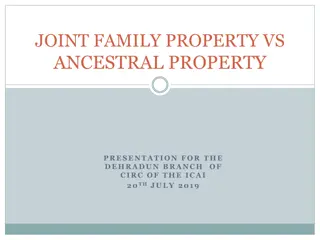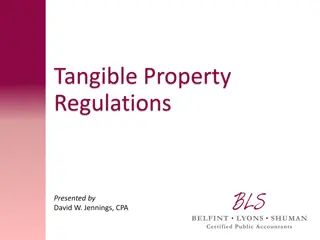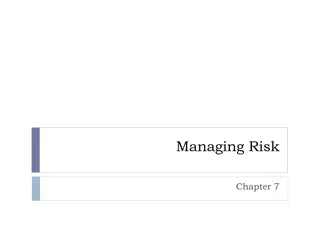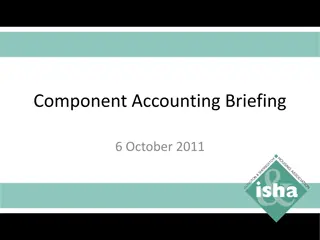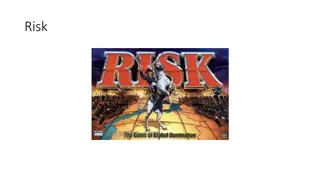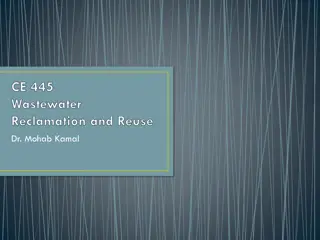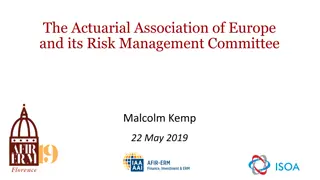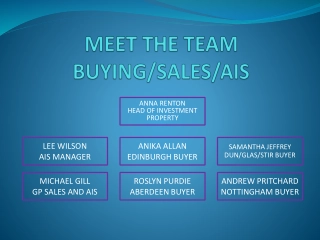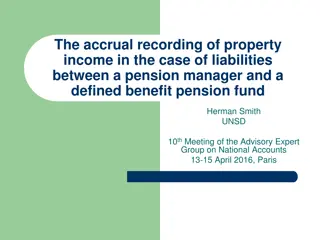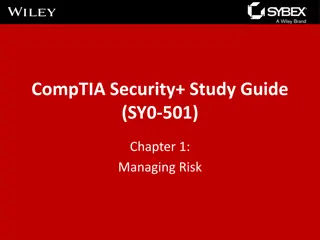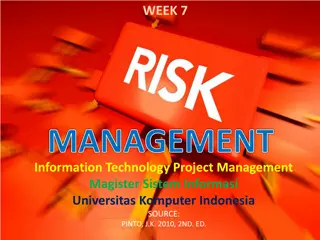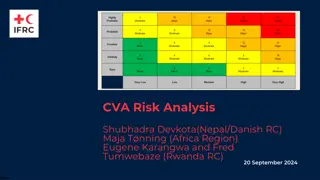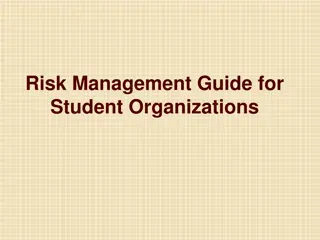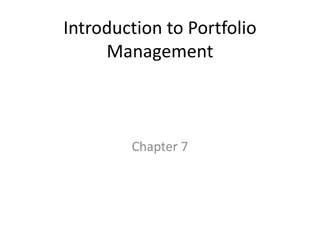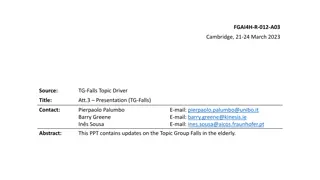Property Risk Management Best Practices
Explore key aspects of property risk management including property insurance inspections, conservation programs, roof maintenance, vendor management, self-inspections, hot-work programs, and water mitigation planning. Learn how to prepare for inspections, manage human elements, maintain facilities, and ensure compliance with best practices in risk engineering.
Download Presentation

Please find below an Image/Link to download the presentation.
The content on the website is provided AS IS for your information and personal use only. It may not be sold, licensed, or shared on other websites without obtaining consent from the author. Download presentation by click this link. If you encounter any issues during the download, it is possible that the publisher has removed the file from their server.
E N D
Presentation Transcript
William Page, CFPS CESCO Senior Risk Engineering Consultant Higginbotham Risk Engineering 903-932-1972 wpage@higginbotham.net
Are you prepared for a Property Insurance Inspection? Property Conservation Human Elements
Property Conservation Program Main Objectives Human Element Program Components What to Expect during the visit? Main questions and topics to expect. Items to have ready and programs ready to explain. Insurability / Risk Engineering grading red flags . It is important to show your facility is best in class .
Roof Maintenance Program Written and documented Vendor contract in place After weather events Monthly visuals Annual certification or life expectancy from qualified vendor Cap-Ex built into budgets This has become an increasing hot item for carriers
Vendor Management Program Written contracts for all outside vendors providing service Need COI s with AI status with appropriate limits Need a system in place to monitor and maintain Needs to be foolproof No shadetree mechanics or underinsured or un-insured allowed
Self-Inspections / ITM Housekeeping policies written documented Housekeeping IT rooms, closets, maintenance, flammables, aerosols, ceiling tiles, electrical closets, janitor closets FE s documented monthly No smoking policies written Weekly / Monthly fire inspections / valve inspections Parking / grounds / all area inspections documented Generators / weekly transfer run / monthly load / annual bank test
Hot-Work Program What is Hot-Work Anything generating heat, flame, or a spark. Cutting, welding, brazing, soldering, etc. Examples . Written program documented All employees affected / authorized trained Tags are retained for review Documentation of contractor compliance
Water Mitigation Plan 6. Identify and label all equipment. Clearly label all shutoff valves on each floor with a standardized identification tag system. Consider including photos of the layouts in the plan. 1. Designate a program lead. A member of the business/facility s management team should be appointed to oversee the program and its implementation. This person should designate and support key personnel responsible for documentation, distribution and implementation of the plan. 7. Document emergency procedures. Document all emergency procedures including damage mitigation for sprinkler leaks, frozen pipes, water infiltration and floods. Include contact information for the program lead handling loss procedures as well as an emergency phone list of vendors, including plumbers, sprinkler contractors, the alarm company, electrician, roofer, etc.; your HIGG claims contact and insurance carrier claims contact. 2. List buildings and key personnel. Each building on a campus should have its own program that is linked to the main program. List key personnel available 24/7/365 with the authority to initiate all emergency procedures, damage mitigation and restoration/clean up services. 3. Identify detection methods. These can include visual or manual detection, such as: base building and sump pump inspections and weather alerts, as well as automatic detection like flow alarms and electronic leak detection systems. 8. Catalog and protect critical equipment. List all critical equipment or operations sensitive to water damage. This could include tenant equipment, the main electrical room and electronic data process center. If possible, ensure that water carrying systems do not run above critical equipment. Alternatively, install physical barriers or leak detection devices. 4. Communicate it well. Document communication procedures, including which program leads are responsible for an emergency response (24/7/365, including holidays). The procedures should highlight the need to communicate every leak found on the property. Emergency leaks and flood damage communication procedures should be given to all stakeholders. 9. Set restoration procedures. Have a documented program for all potential restoration procedures complete with drawings. Make sure emergency liquid leak management materials as well as a list of emergency liquid leak restoration contractors are easily accessible. 10. Maintain emergency spill/pipe repair kits. Spill and emergency pipe repair kits should be easily accessible for use anywhere in the building. The maintenance and/or engineering departments should be involved in selecting the contents and locations of the kits. A sample kit might include a copy of the water damage mitigation plan, plastic sheets to cover electronic equipment, plumbing tools, portable sump pumps and wet vacuums and fans. 5. Use schematics as the guide. Make sure key personnel are familiar with both interior and exterior schematics of the property, including the main sprinkler system, all domestic piping, the water loop systems including pumps, A/C system isolation valves, the main electrical breaker and gas shutoff. Diagrams should be created to demonstrate valve shutoff procedures for critical equipment.
Fire Department Pre-Planning Annual visits at a minimum Annual hydrant flushing use for department training Your occupancy is unique Written and documented
Emergency Action Plan Updated ? By department, supervisors By peril Documented drills? Considered effective?
Electrical Preventative Maintenance Program Infrared testing is a minimum Surge protection on the main feed Back up generators? Life Safety ? UPS for critical systems
Life Safety / Joint Commission Applicable ? Fire doors / Fire partitions / Egress
NFPA 13 / NFPA 13 R Concealed areas / attic Fire walls / fire partitions / fire stops Sealing wall penetrations within electrical rooms / closets Freeze opportunities for domestic water and fire protection systems
Questions? wpage@higginbotham.net 903-932-1972




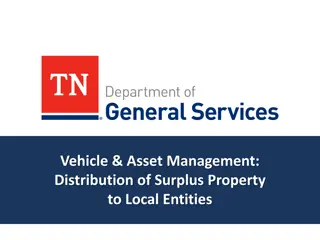








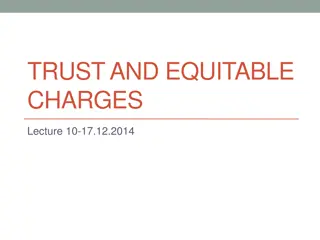

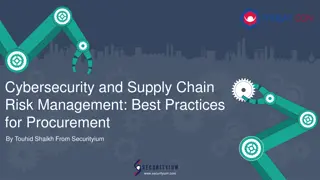




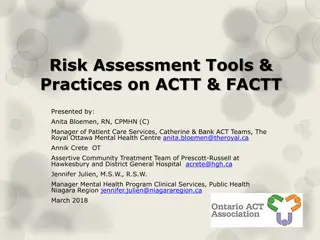
![Property Settlements in Family Law: Case Study of Stamatou & Stamatou [2022] FedCFamC1F 241](/thumb/63303/property-settlements-in-family-law-case-study-of-stamatou-stamatou-2022-fedcfamc1f-241.jpg)


